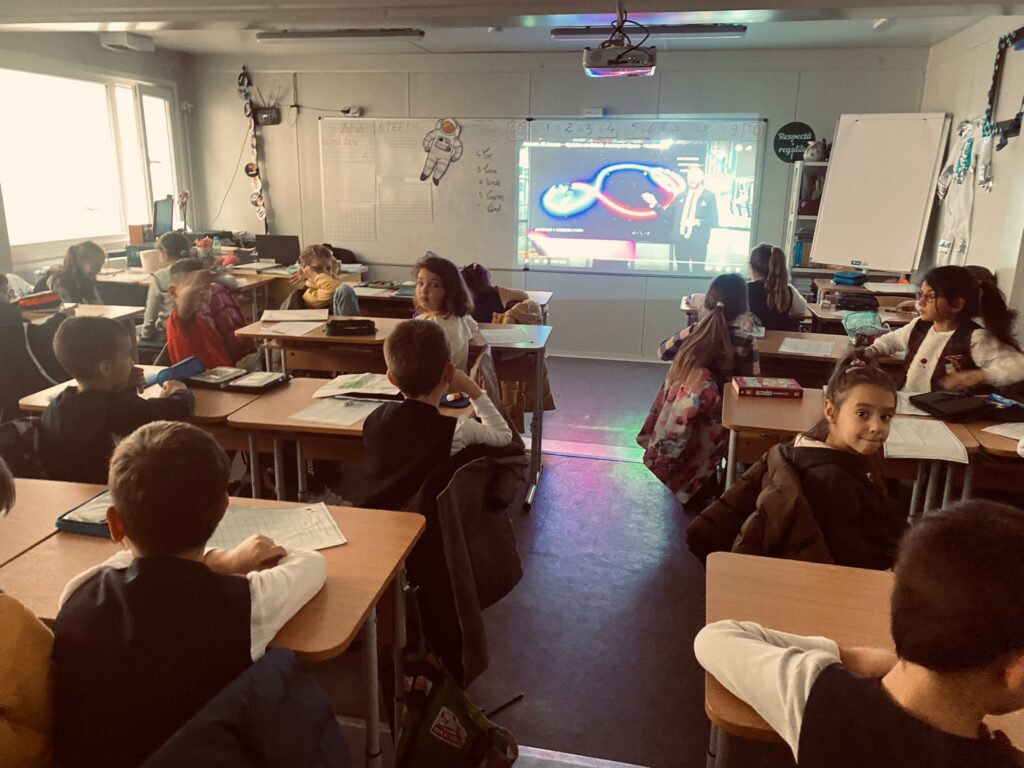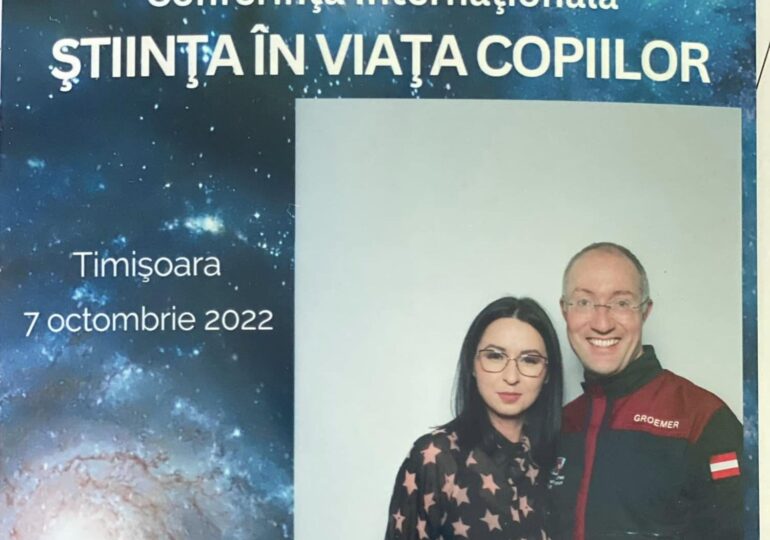Bianca Boroș is one of the teachers who brings a different approach to education in Romania. Passionate about sciences, she was trained in Belgium at the European Space Agency to teach children about astronomy and does it with such dedication that during her classes, you feel like you’re stepping into the International Space Station, and the children are absolutely fascinated.
She has introduced NASA training exercises for its astronauts to the children, created a bionic hand with them, showed them what foods taste like in space, and even brought an astronaut to Timișoara to answer the children’s questions.
"In 2008, I discovered a program called Celestia, through which we could observe planets using a computer and a projector. It was impressive because we could see them, rotate them to observe them from different angles, from the position of the entire solar system to specific details, to the moons around Jupiter. In the meantime, they also developed an app.
There were very few materials available in Romanian, so I searched in English and from there I discovered various movements worldwide related to space education", Bianca Boroș tells spotmedia.ro.
"My knowledge at that time was limited. In 2007, I graduated from high school, I didn't know much about it other than the number of planets, I didn't know why Pluto wasn't considered a planet anymore. It's very interesting that this happened while I was working at kindergarten and my kindergarten children learned to explain why...
Because I liked it and I worked a lot with it. We had to choose a theme for each week. Themes about space and the universe spanned several weeks because we couldn't cover everything in just one week, to show them, to unfold different activities in this regard.
And I had to learn a lot myself, to read, to know scientifically what's happening there, so I could later tell them.
It came naturally because in Europe there were already many materials adapted to age level, clearly not for kindergarten, but I simplified them so I could use them in kindergarten. Later, when I moved to school, it was much easier. Because the materials were actually intended for elementary, middle school, and high school students.
Meanwhile, the European Space Agency has developed a lot in this area of education, so they have created departments to deal with it, to prepare teachers to teach further about cosmic space, with the idea that we will prepare future candidates for various positions in the European Space Agency."
Once she discovered the educational world of astronomy, her and her students' horizons visibly widened.
"The first course outside the country was at the European Space Agency in Belgium. They have all sorts of calls for participation. I found it very interesting that they covered your transportation and accommodation costs just for you to go there, learn, come back, and apply what you learned there.
The calls are still valid, this year they even held two series of training sessions for elementary school. Generally, it was either one per year, or one in spring and one in autumn, one in Belgium and one in the Netherlands.
And after I came back from there, I said, 'We have to do this!' It exists here too because we have ESERO, the Romanian Space Agency, called Rosa, and a department that deals with this education part, workshops for children, workshops for teachers, there's even a course held every year in Mărișel and that's how I got in touch with them, with those from the Romanian Space Agency.
During the course in Mărișel - because that's where all of us interested in this astronomy part gathered - we thought of creating an optional discipline about astronomy and space sciences. We thought about how all these materials could be gathered somewhere. What materials you need, what are the steps you need to go through, the science behind the experiments for teachers who don't know what it's all about there - because we can't know all those aspects, but they explain the scientific part behind the experiment so that we can pass it on to the students and we can answer questions.
And that's how the working group of the Ministry for the National Space Education Program was created.
"At Mărișel then, Mrs. Ana Elisabeta Naghi (advisor at the Ministry of Education) was also there, without whom we certainly wouldn't have succeeded. The Institute of Education Sciences would send the material back to us for all sorts of details that needed to be fine-tuned because we had to create new competencies but somehow fit into the profile of the student who promotes education in the twelfth grade. And when we made them too general, or too specific... But Mrs. Ana Elisabeta Naghi was an iron hand and she somehow kept us from dropping it. She managed to keep us engaged until she managed to take it to the ministry to be validated and introduced into the national offer. It was already introduced this fall. We are currently working on the guide. We thought it would be easier there because we already have the materials, but it's not easier," she says.
Now all the links to all the materials are in the curriculum, divided by age level, topics, and chapters.
"What we want is to turn this into a workbook where all the worksheets students need are available, where there are instructions for teachers and somehow scripted. There should also be something transmitted in the form of a book. We're not yet so digitized that every teacher can easily access those materials. Sometimes it's easier if it's a book you open," explains Bianca Boroș.
And the courses are already underway because they have been included in the offer of the Teacher Training Center in each county seat.
Her students know that every Thursday is experiment day at school, and they can't wait to see what interesting activities have been prepared for them, Bianca Boroș says.
What do children learn in astronomy classes?
The information there is not only related to astronomy; it's also related to all the other subjects we cover in school. For example, we have science, math, and environmental exploration. In November and December, all the proposed themes were related to the human body. What I did was to link those pieces of information that we had to go through anyway, because they were part of the curriculum, and I improved them by introducing these space-related elements.
Why did we do the "Bionic Hand" workshop? Because you need a robotic hand in space to work outside the spacecraft.
The program itself is extraordinary, it is created and promoted by NASA, it's called "Train Like an Astronaut," and there are all sorts of activities through which you improve your reflexes because if you're in outer space and you drop a screwdriver, you can't catch it anymore. So you need reflexes.
Plus, it's much more difficult to do this when you have the astronaut suit which has three different pairs of gloves inside, so in terms of dexterity, it's more difficult to catch something in your hand. But that's why they train.
For example, they have a training session with a ruler. There are two kids facing each other, one releases the ruler, and the other has to catch it, and depending on how quickly they catch it, the speed of light is calculated. Depending on how many centimeters the ruler reached, divided by the time it took to catch it, it gives a value. In fact, you're training your reflexes, eye-hand coordination, how quickly you see something falling and catch it.
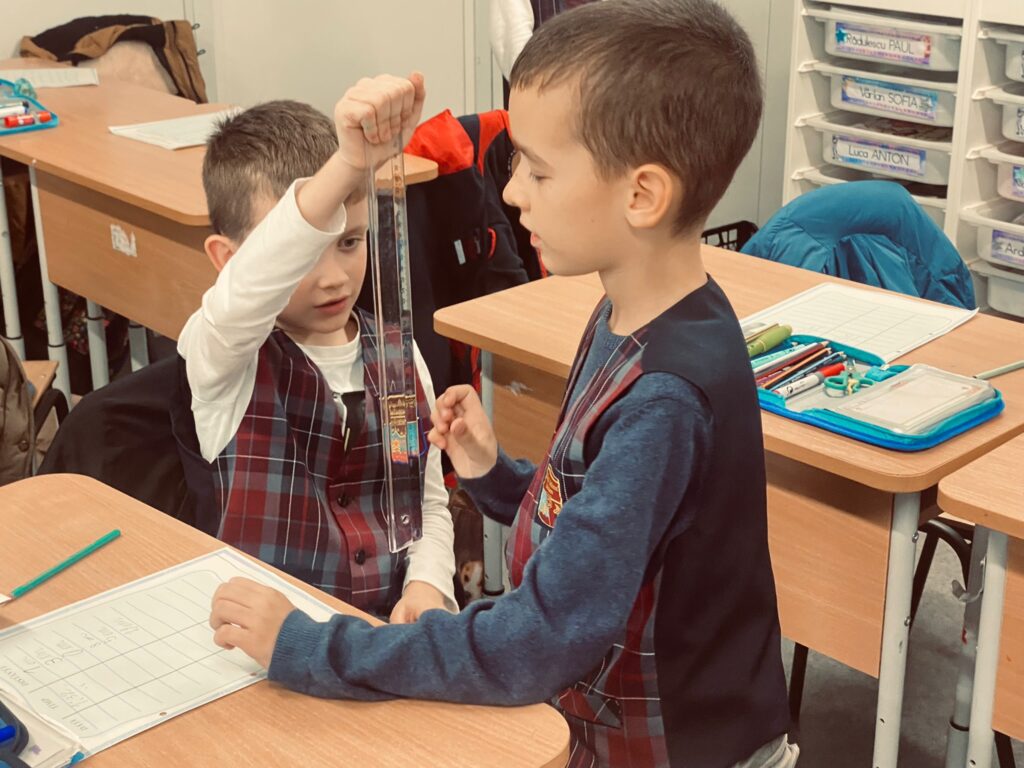
At the Bionic Hand workshop, after learning about the human body, muscles, tendons, and bones, we created a hand out of cardboard
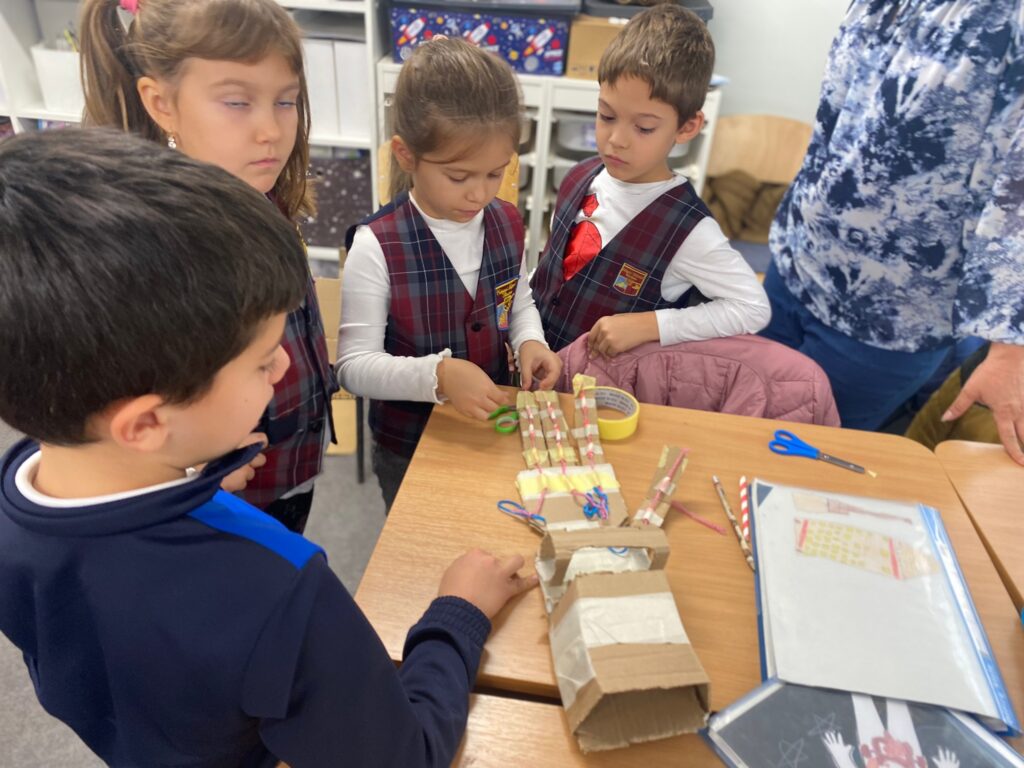
The children were given only cardboard pieces, some paper straws, thread, and jar elastics. In the classroom, we had some human body silhouettes about a meter and 20 centimeters tall where they could observe the tendons, bones, and how everything is connected. They had to discover through trial and error how to create the phalanges for the fingers, what would represent the muscle, what would represent the tendons, and assemble them.
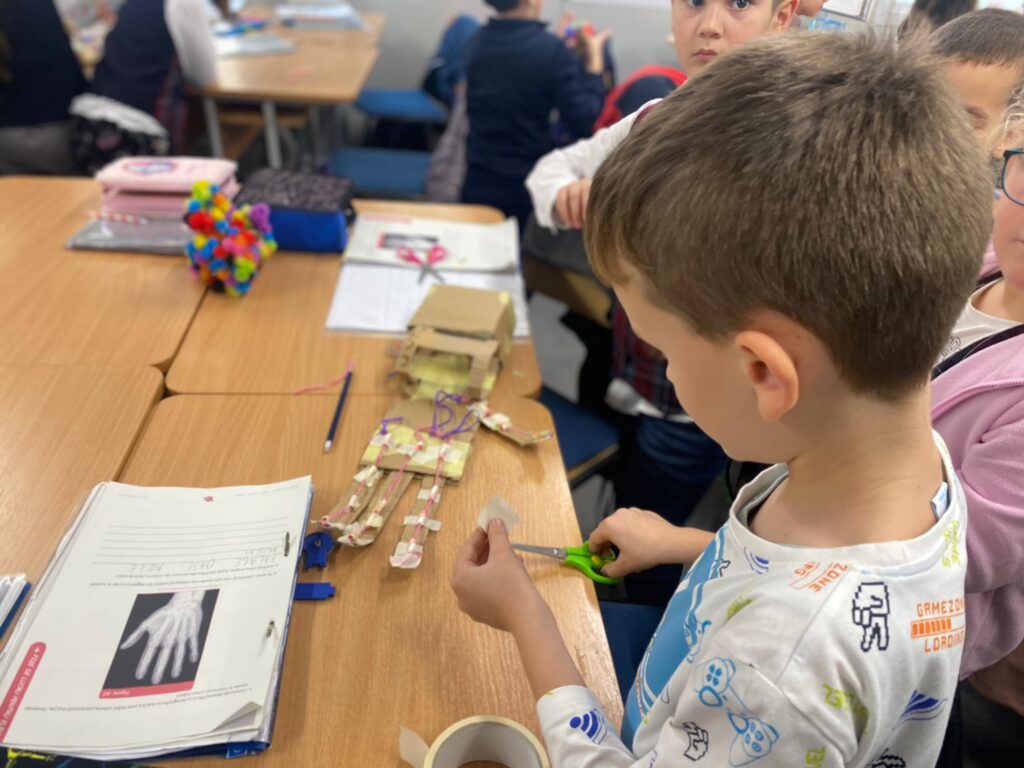
They actually bent the cardboard to create the finger joints, the straws were cut to represent the phalanges - because they felt and observed that there are three of them, and then they observed on the larger model and could easily see how the bones are connected, that the muscles are attached with tendons. So they had the thread, which represented the tendon, and the muscle which was the jar elastic. The string passed from the tip of the finger through the three phalanges, the three straws, and at the very bottom, it was tied to the elastic. They were given paper tape, because it's easier to tear, and in the end, when they assembled it, they put their hand into a sheath, caught the elastics with their fingers, and when they tightened, the fingers of the cardboard hand came together. The challenge was that they had to lift some toys. Through trial and error, how can we improve the model?
What is recommended in these experiments is that after creating the prototype, you revisit the activity the following week and improve the prototype. Each team receives what they achieved a week ago, analyzes it, and tries to improve it. How can I stick the phalanges better, how can I tie the string better so that it doesn't come off while pulling hard on the elastics, how can I create a comfortable sheath for the hand. Somehow they were also working with the mindset of a researcher.
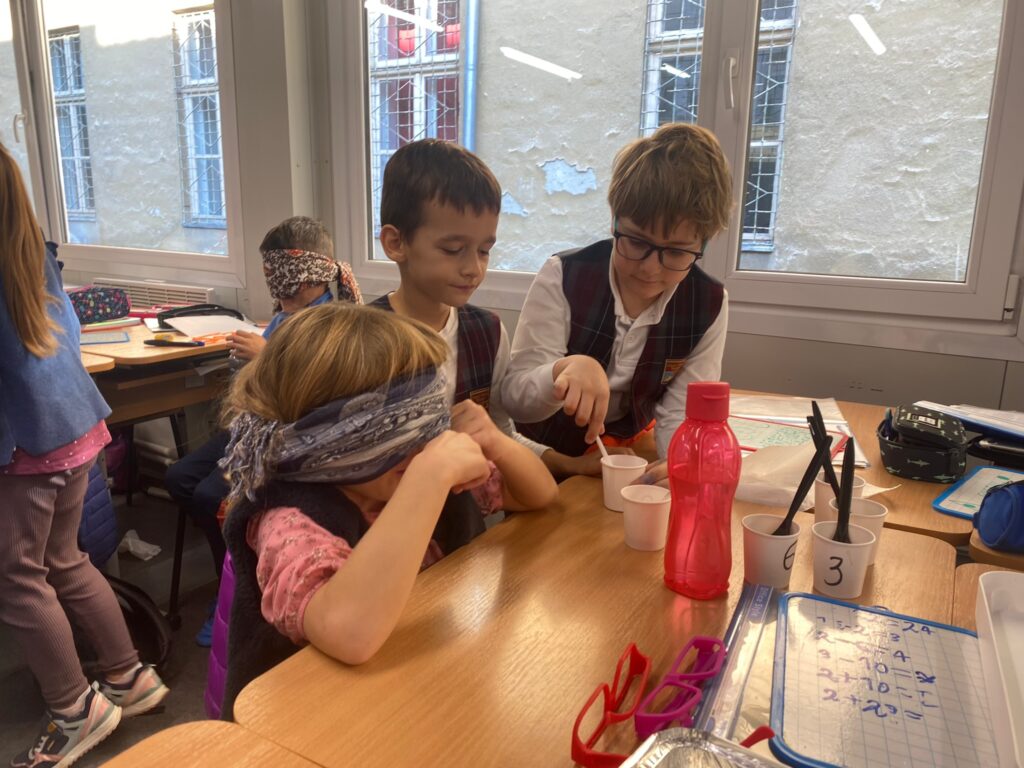
Also, while discussing the human body, they were given cups with various solutions and had to put two or three drops of each solution on their tongues and detect in which area of the tongue they sensed the bitter taste, the sweet one…
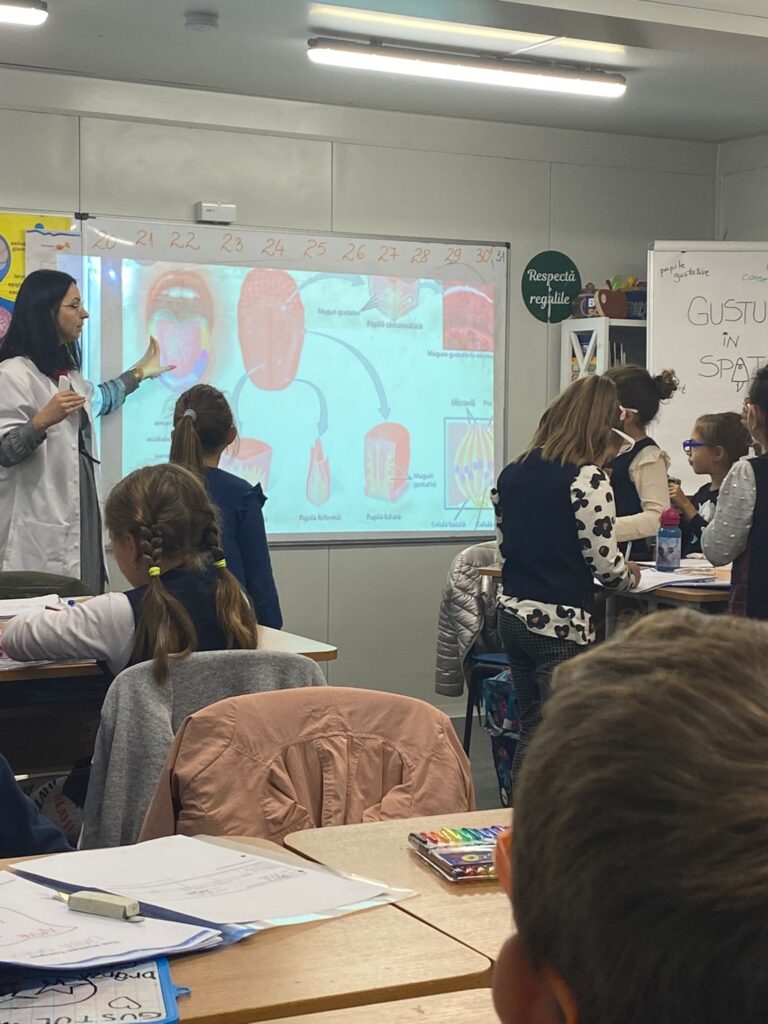
They were given a drawing representing a tongue and had to mark where they sensed the sweet, salty, bitter, and sour tastes. And finally, only one member from each team was the astronaut. This is where the astronomy part comes in because I always introduce what happens in space.
Information about this and all sorts of videos from the International Space Station: how do astronauts eat? What do astronauts eat? What happens when you reach space is that there is no gravity, so the blood is not drawn towards the legs anymore and tends to accumulate in the head and especially in the nasal area, which gives you a sensation as if your nose is stuffy. And because this happens, you don't feel the taste of food.
What they learned from that experiment is that to taste food, it's not enough to have a tongue, you also need a nose. So the astronaut "guinea pig" had to taste, blindfolded and holding his nose, six foods. And then taste the same food with his nose released to try to identify what he's eating.
And at the end of the activity, we ordered from England from the company that produces food for the International Space Station," the teacher explains.
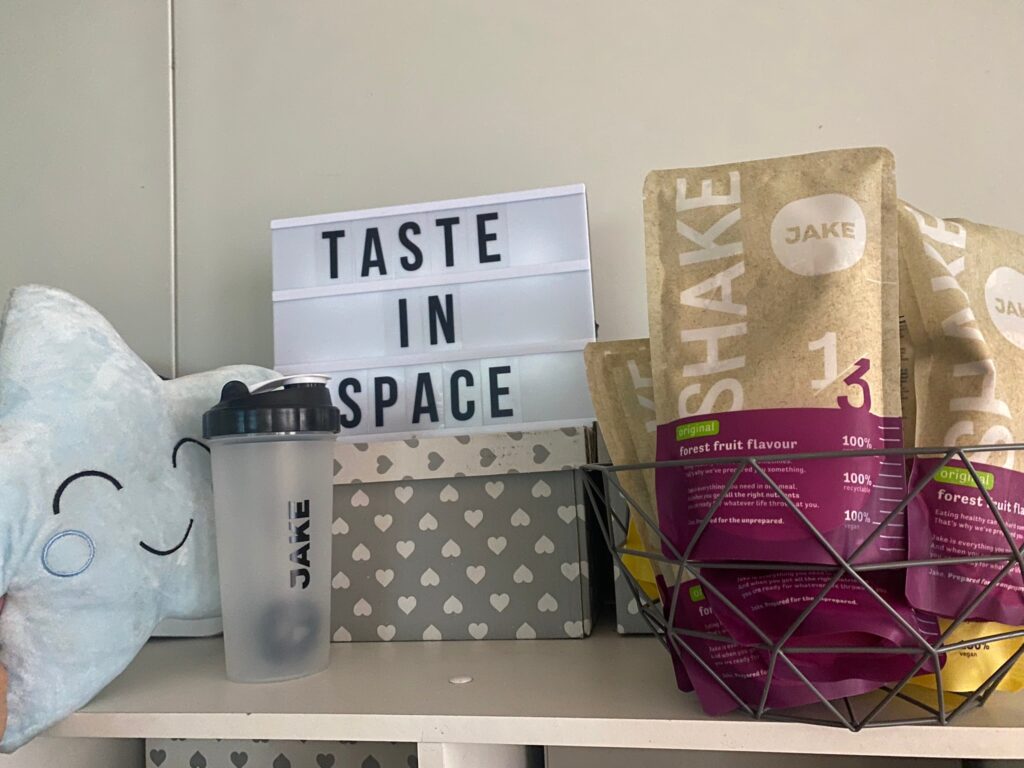
Practically, you prepare not only future astronauts in class but the entire range of professions related to space activity.
In the field of space sciences, you need more than just astronauts because it's not only the astronauts who do the job there. You also need designers, for example, because they are constantly trying to improve the way astronauts move in their spacesuits. It's awful to sneeze in a spacesuit because your hand doesn't reach inside to wipe your nose. Their nose itches terribly, and inside the helmet, there's a nose scratcher.
Or they need psychotherapists because it's not easy to keep your morale high under those conditions," she explains.
What do the children say? Are they fascinated by everything they learn?
Indeed, they are fascinated because they have the opportunity to see people who have a career related to space, whether it's scientists or even astronauts. When you as a student have the opportunity to ask questions and have a dialogue with a specialist, the impact on learning is different from the situation where only the teacher conveys information. In this regard, you brought an analog astronaut to Timișoara.
They call them that because they don't go into outer space but test astronaut suits and various scientific centers around the world. They test them all in environments that closely resemble what they would find on Mars or the Moon. It's very interesting that they bring a lot of information that then facilitates the execution of the respective events in outer space.
They did the same in the 1960s during the Apollo missions. Until they actually got to the Moon, they tested on Earth how to successfully extract a soil sample using the astronaut suit. Because movement is hindered, the suit is very heavy, it takes between 4 and 5 hours to put it on. And until you tied all the sensors and everything, you actually became tired, and then you had to perform some very delicate experiments in weightlessness. And they trained a lot here on Earth in various environments, including underwater. To offer children such experiences, funding is needed.
What solutions are there for the model to be easily replicated in any corner of the country?
Although it's much more interesting to physically meet with them, with an astrobiologist, an astrophysicist, or engineers... In case that's not possible physically, it can be done online. In 2013, the West University had such an event with an astronaut from the International Space Station. And they had a dialogue.
This could be done in schools, and Mr. Dumitru Prunariu, the Romanian cosmonaut, actually did that.
There are opportunities. Indeed, in terms of funding, that's a bit more complicated because when you want to bring these people to your city, you have to find ways to fund their transportation, accommodation, various materials they would need to conduct workshops with students. There would be costs.
But there are many recordings from the International Space Station that show, for example, how you take a bath in outer space. How you eat in outer space. The fact that liquids float around you and have a particular property that they stick to any surface. In practice, you can't wet your hair; it's like a gel that floats around you.
As an experience for children, this is also valuable, clearly.
